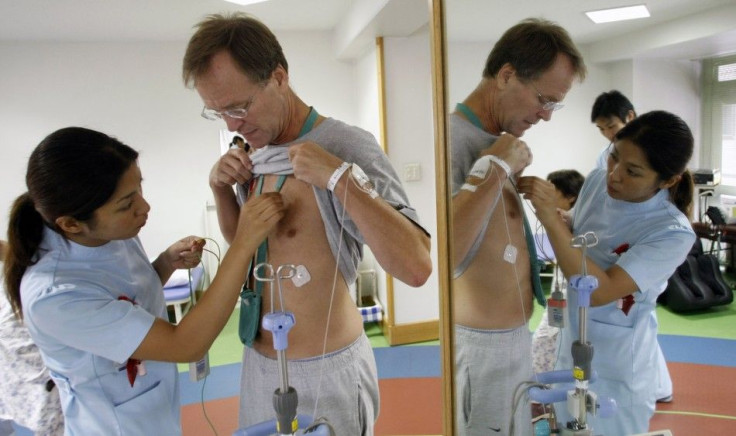Strokes Affecting Young People, Risk Increasing at Alarming Rate in U.S.

It is generally believed that older people are more vulnerable to strokes, but a new study has revealed that even young people, including children and adolescents in the U.S., are increasingly vulnerable to it.
Within a period of 13 years, from 1995 to 2008, the number of people within the age group of 15 to 44 who were hospitalized for strokes rose by 37 percent, said researchers at the U.S. Centers for Disease Control and Prevention.
According to Mary George, lead author of the study, scientists were able to indentify significant increasing trends in ischemic stroke hospitalizations among adolescents and young adults. While one in three ischemic stroke patients was between 15 to 34 years old, more than half of in the 35-to-44 age group had high blood pressure.
Stroke is brain damage caused by a blocked blood vessel or bleeding in the brain. The common symptoms of a stroke may include weakness, numbness, blurred vision, confusion, and slurred speech. A patient may suffer brain damage if there is a lack of oxygen and glucose (sugar) flowing to the brain, which leads to the death of brain cells.
The two main types of stroke include ischemic stroke and hemorrhagic stroke. Ischemic stroke occurs when a blood clot, or thrombus, forms that blocks blood flow to part of the brain. A hemorrhagic stroke occurs when a blood vessel on the brain's surface bursts and fills the space between the brain and skull with blood, or when a defective artery in the brain bursts and fills the surrounding tissue with blood.
The study found that the number of people hospitalized for ischemic stroke increased for both sexes in all age groups except girls 5 to 14. Another shocking finding was that almost one-fourth of the patients in 15-to-34 category who had ischemic strokes also had diabetes.
According to the findings of the study, published in the Annals of Neurology, the increased risk of strokes was greater in men than in women in all age groups. Over the time period studied, it rose 50 percent for men 35 to 44. For those 15 to 34, it was 46 percent, while for boys 5 to 14, it increased about 51 percent.
Compared to their male counterparts, women between 35 to 44 years of age had a 29 percent increase in ischemic strokes. For those 15 to 34, it was a 23 percent increase and for girls 5 to 14, the increase was below 3 percent.
The study also reported an increase in the prevalence of hypertension, diabetes, obesity, and tobacco use among this age group during the 14-year study period.
Our results from national surveillance data accentuate the need for public health initiatives to reduce the prevalence of risk factors for stroke among adolescents and young adults, the report said. Urgent public health initiatives are needed to reverse trends in modifiable risk factors associated with stroke in adolescents and young adults.
According to Dr Lorna Layward, from the Stroke Association in the UK, a quarter of all strokes happen to people of working age, and around 400 children have a stroke every year in the UK.
This research emphasizes the need for people to be aware that stroke can affect younger people, and for all of us, regardless of our age, to check our blood pressure and adopt a healthy lifestyle, Layward stated.
© Copyright IBTimes 2025. All rights reserved.






















